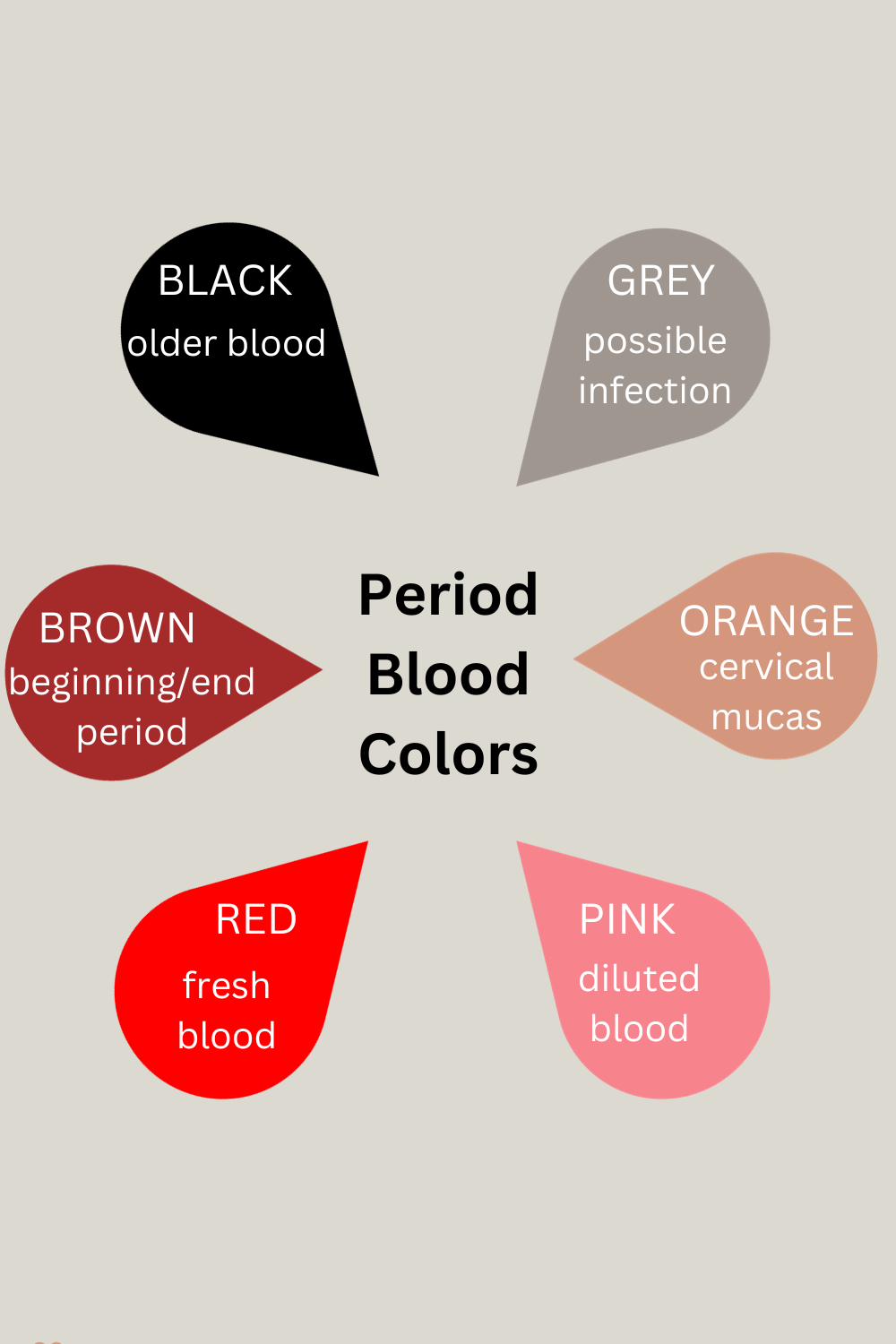Period Blood Color - Understanding Pink Discharge
The menstrual cycle might seem very straightforward, but the reality is that symptoms are not always what we expect. In fact, most questions about menstrual cycles tend to be about period blood, period symptoms, and whether everything you’re experiencing is normal.
Topics like different period blood colors, period blood clots, and pink discharge often spark health-related anxiety., Despite the personal nature of these questions, it’s essential to seek answers and solutions to ensure a healthier life. Whether it’s spotting after a period or noticing bright red period blood, there’s always an answer and solutions are within reach.
What are typical period symptoms?
A menstrual cycle, also known as a period, is a monthly discharge of blood built up on the inner lining of your uterus in preparation for pregnancy. When hormones indicate the lack of pregnancy in your body, the lining begins to shed, and your period will start. This usually lasts between three to seven days. Periods can vary for each woman, but typical symptoms usually include abdominal cramps, acne breakouts, fatigue, bloating, constipation, headaches, changes in mood, back pain, trouble sleeping, and more.
Symptoms may become more intense when accompanied by a uterine condition. There are several conditions that can give rise to additional symptoms, including uterine fibroids, polyps, endometriosis, pelvic inflammatory disease, and an enlarged uterus. Menstrual cycles can be exacerbated by one or more of these conditions resulting in increased blood flow, formation of blood clots, intensified abdominal pain, irregular cycles, and more.
Period Blood Color
Period blood does not just come in red. In fact, it’s quite typical to observe period blood that varies from brown, dark red, bright red, pink, and occasionally even orange in specific situations. Typically, the color may vary throughout the course of your period, but it can also be influenced by factors like hormone shifts, the presence of fibroids, infections, miscarriages, and more.
What do these period blood colors mean?
The color of your menstrual blood can vary throughout your cycle, and while it's generally not a cause for alarm, it can sometimes provide insights into your reproductive health. Here's a breakdown of what different period blood colors may signify:
Bright Red: Fresh, bright red blood is often associated with the early days of your period. This color indicates a healthy flow of menstrual blood and is typically nothing to be concerned about.
Dark Red or Brown: As your period progresses, the blood may darken in color. This change occurs because the blood has been exposed to oxygen for a longer time, causing it to oxidize. Dark red or brown blood towards the end of your period is normal and usually nothing to worry about.
Pink: Light pink discharge can occur for various reasons. It may be a sign of early spotting, especially if you're not expecting your period yet. Pink discharge can also result from the dilution of blood by increased cervical mucus during ovulation. In most cases, it's not a cause for concern.
Orange: Occasionally, you might notice orange-tinted menstrual blood. This color can be attributed to a mix of fresh blood and cervical mucus, similar to pink discharge. Unless accompanied by other concerning symptoms, orange menstrual blood is typically considered normal.
Gray or Green: Unusual colors like gray or green could indicate an infection. If you notice these colors in your menstrual blood or experience foul odor, itching, or discomfort, it's essential to consult a healthcare provider promptly.
Black: Extremely dark or black menstrual blood may be older blood that has taken longer to exit your body. While it's usually not a cause for concern, persistent black menstrual blood accompanied by other symptoms might warrant a medical evaluation.
Heavy Clotting: The presence of blood clots in your menstrual flow is relatively common, especially on heavier flow days. However, if you experience excessively large or frequent clots, it's advisable to discuss this with a healthcare professional.
When to seek medical attention for menstrual changes
For most individuals, period discharge and color change are typically nothing to be overly concerned about. As your menstrual cycle moves through each phase, color change can be a gradual but regular part of your period. However, there are some instances in which it is advisable to consult a healthcare professional to address any worrisome signs that may indicate underlying conditions and infections.
One indicator that should prompt you to reach out to a doctor is if you experience heavy menstrual flow, requiring you to change your pad or tampon every one or two hours. Additionally, if your period lasts longer than seven days, your cycles become irregular, you observe grayish discharge or endure severe and chronic pain, among other similar symptoms, it is advisable to schedule a visit to your doctor or even head to the emergency room if the situation is particularly urgent.
Menstrual cycles are tricky and can be hard to navigate, but understanding what is healthy and what might be indicative of an issue is a valuable first step in monitoring your menstrual health. If you have any concerns regarding your menstrual cycle and its associated color changes, do not hesitate to seek guidance from your healthcare provider.



